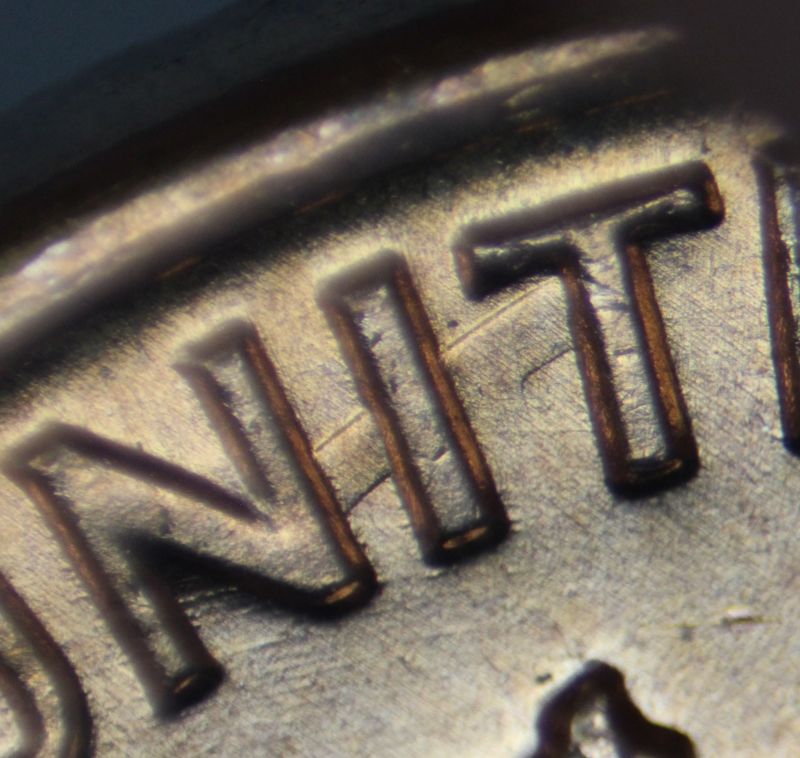Part IV. Die Errors:
Die damage with design transfer:
Floating die clash:
Exogenous floating die clash
Definition: Clash marks generated by a die fragment that did not calve from either of the dies that struck the coin.
Around half a dozen endogenous floating die clashes are known. These are clash marks generated by die fragments derived from one of the dies that struck the coins carrying the clash marks. As a result, one of the dies has a corner die break that appears on the coin as a “cud”.
Only one exogenous floating die clash is known. Discovered by Robert Piazza, it appears on the reverse face of a 1972-D cent. The clash consists of an impression of the perimeter of the field portion of the die fragment’s working face, as well as the tops of two incuse letters that may represent. These incuse letters belong to the reverse design and may represent the AM of AMERICA.
The die fragment may have come from an adjacent die pair or a nearby die couplet. It’s also possible that the fragment was derived from a previous die that was replaced after it broke. The fragment could have lodged in a die recess and then fallen out, with its working face directed downward toward the anvil (reverse) die.
